|
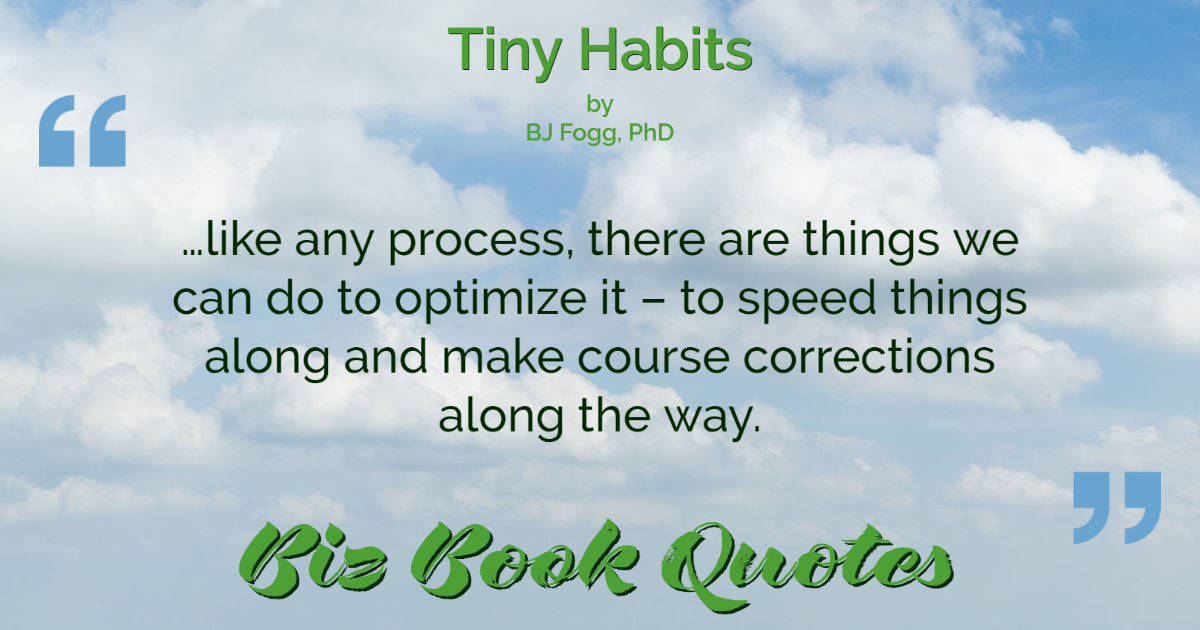
|
Tiny Habits:
…like any process, there are things we can do to optimize it – to speed things along and make course corrections along the way.
|
166 |
|
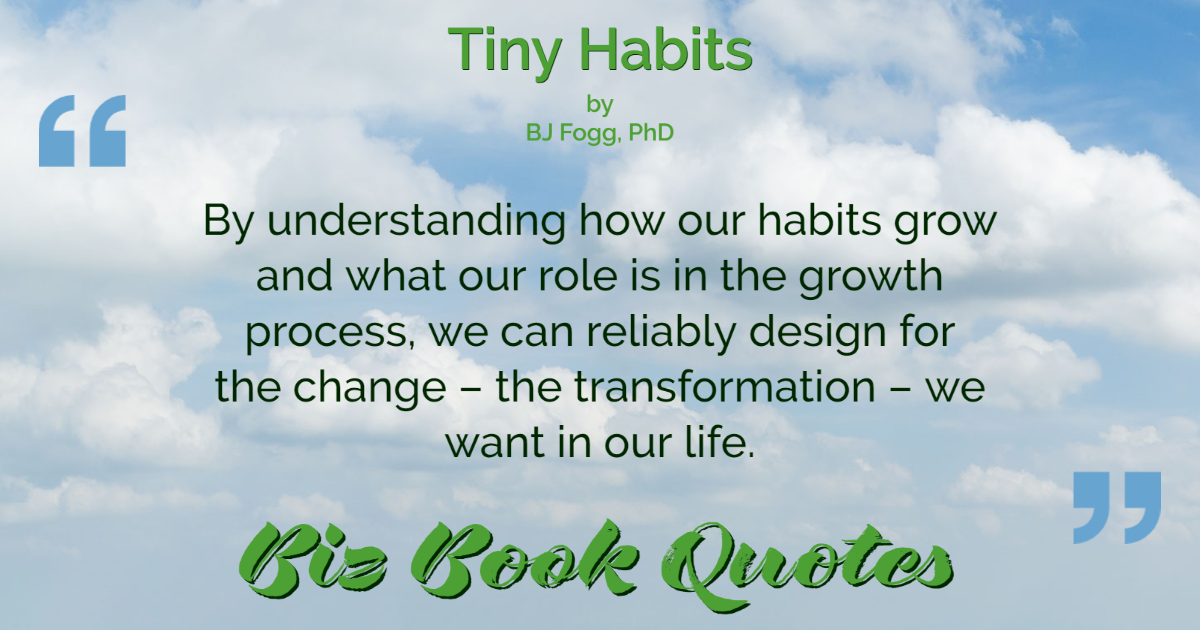
|
Tiny Habits:
By understanding how our habits grow and what our role is in the growth process, we can reliably design for the change – the transformation – we want in our life.
|
166 |
|
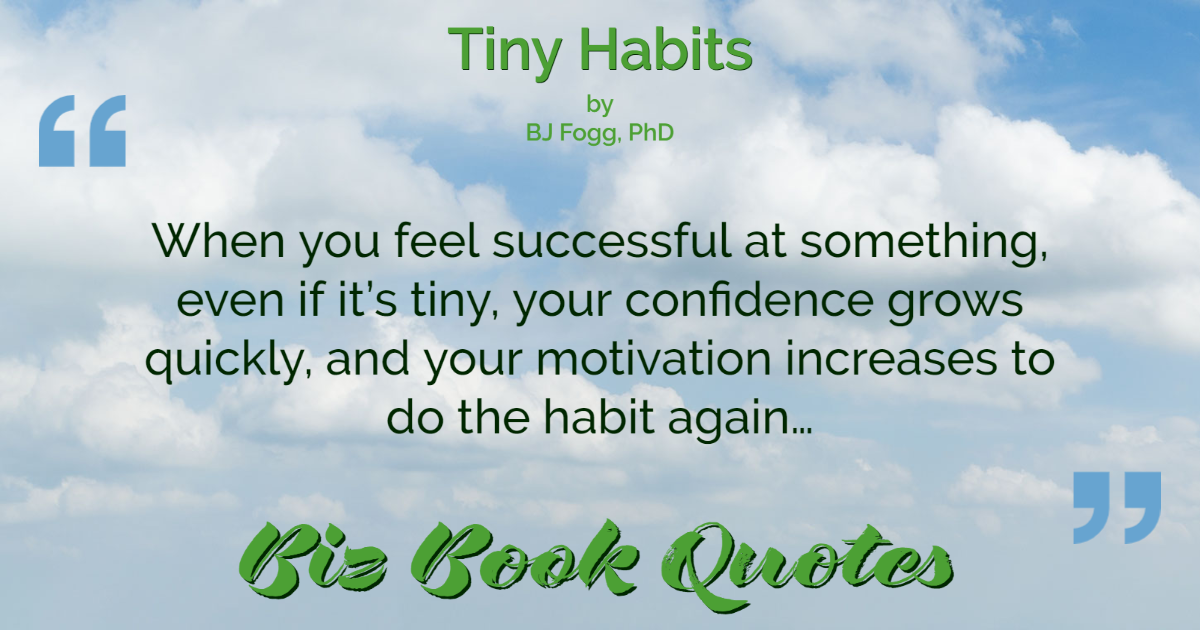
|
Tiny Habits:
When you feel successful at something, even if it’s tiny, your confidence grows quickly, and your motivation increases to do the habit again…
|
169 |
|

|
Tiny Habits:
Hope and fear are vectors that push against each other, and the sum of those two vectors is your overall motivation level.
|
170 |
|
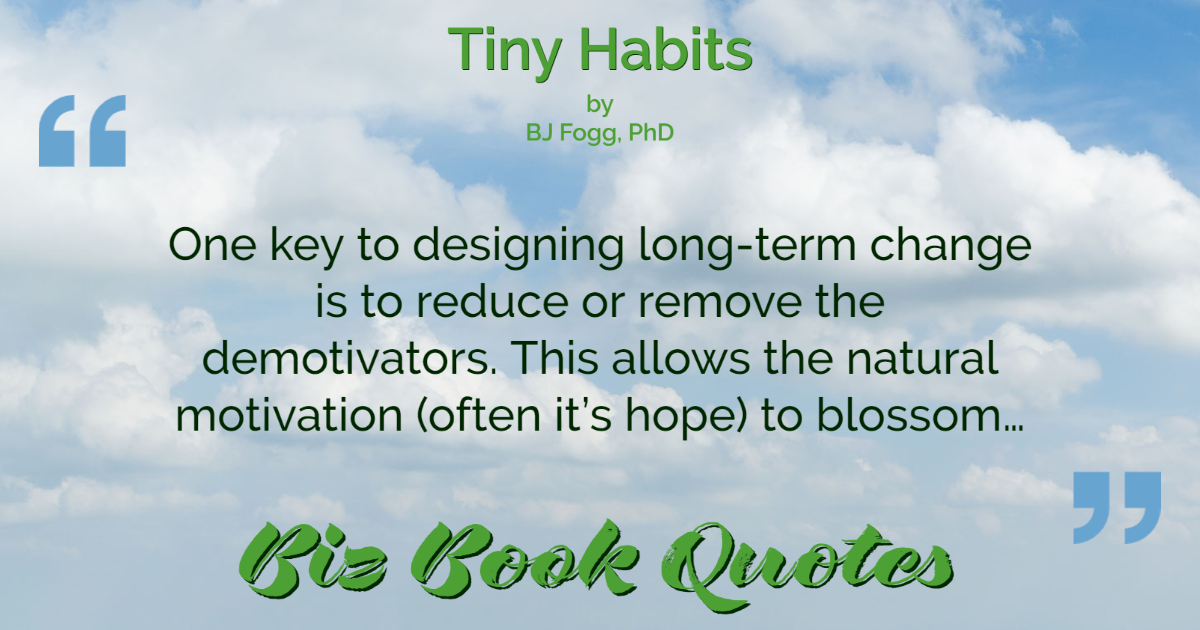
|
Tiny Habits:
One key to designing long-term change is to reduce or remove the demotivators. This allows the natural motivation (often it’s hope) to blossom…
|
171 |
|
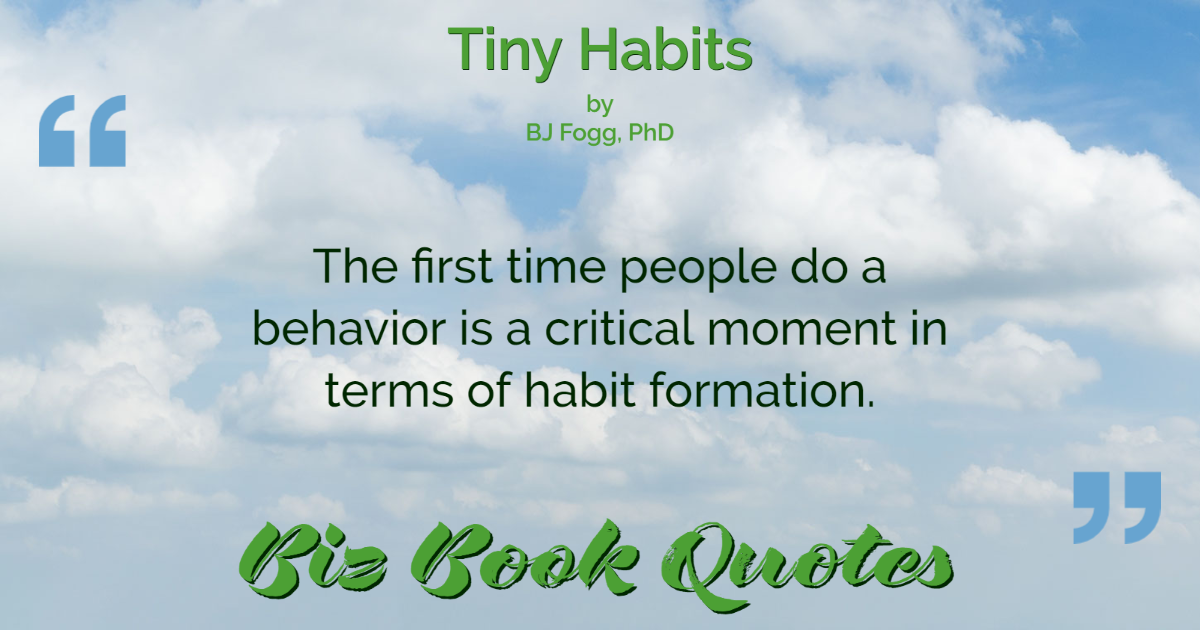
|
Tiny Habits:
The first time people do a behavior is a critical moment in terms of habit formation.
|
172 |
|

|
Tiny Habits:
When a demotivator goes away, you open the door to a bigger and harder behavior.
|
172 |
|
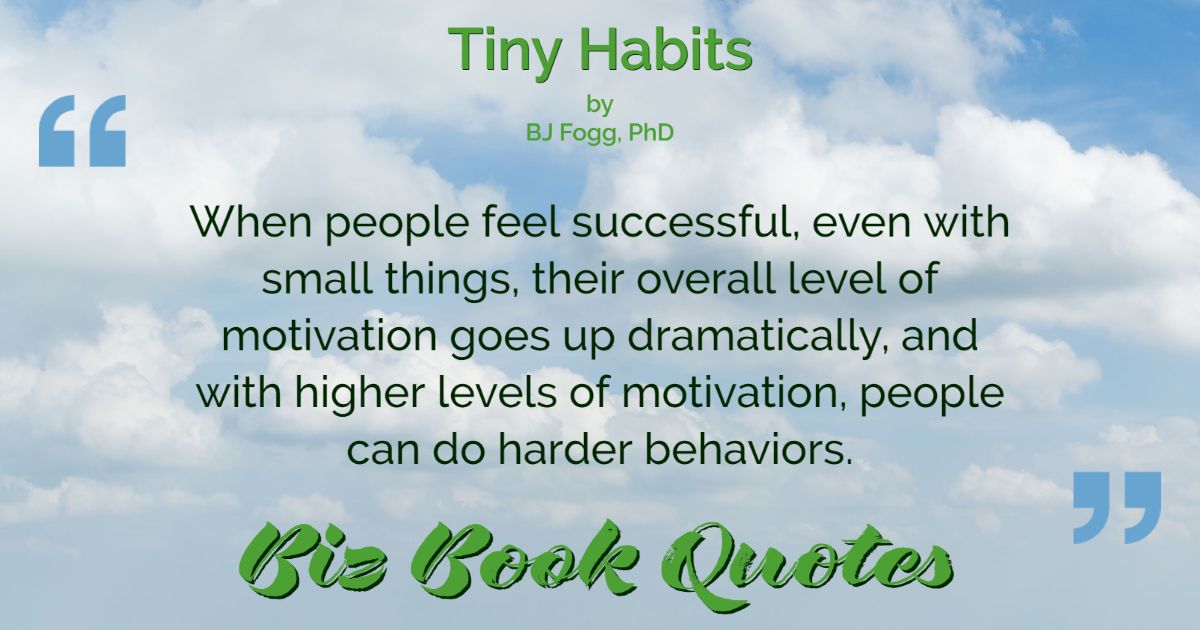
|
Tiny Habits:
When people feel successful, even with small things, their overall level of motivation goes up dramatically, and with higher levels of motivation, people can do harder behaviors.
|
172 |
|

|
Tiny Habits:
If you want to create a list of the habits you want to eventually do, don’t get too rigid with your list.
|
175 |
|

|
Tiny Habits:
Knowing how many new habits to do at once and when to add more is a skill you build largely by diving in, trying stuff, and learning what works for you.
|
175 |











